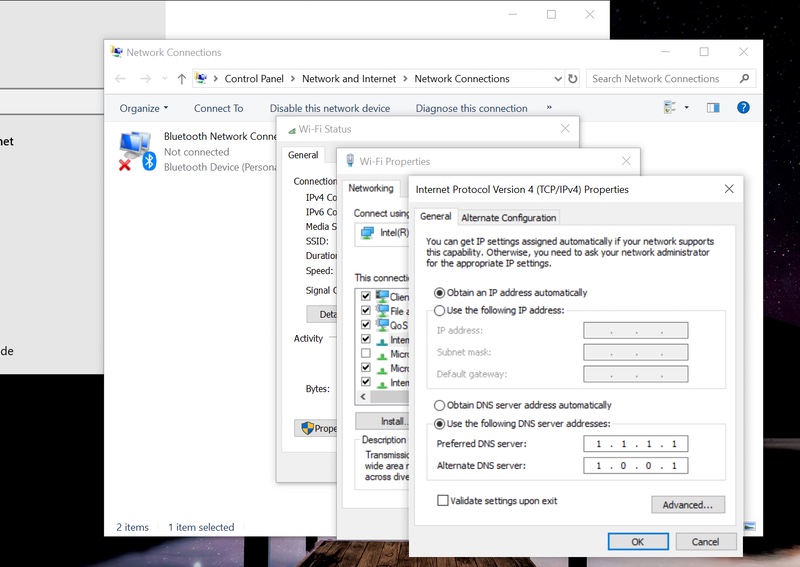Top DNS Servers
- Primary DNS: 8.8.8.8
- Secondary DNS: 8.8.4.4
- Primary DNS: 208.67.222.222
- Secondary DNS: 208.67.220.220
- Primary DNS: 1.1.1.1
- Secondary DNS: 1.0.0.1
- Primary DNS: 9.9.9.9
- Secondary DNS: 149.112.112.112
How do I make the switch on my computer?
Okay, this is where things can get a bit tricky, but it should be manageable for everyone.
If you’re a Windows user

- Go to Start Menu
- Click Settings
- Click Network & Internet
- Click Change adapter options
- Double-click on Ethernet or Wi-Fi, depending on how you’re connected
- In the pop-up window, click Properties
- Double-click on Internet Protocol Version 4 (TCP/IPv4)
- Choose Use the following DNS server addresses
- Key in the digits of your chosen public DNS server, with the Preferred DNS server being the primary one, while the Alternate DNS server is your secondary one
- Click OK to make the changes, exit the Control Panel